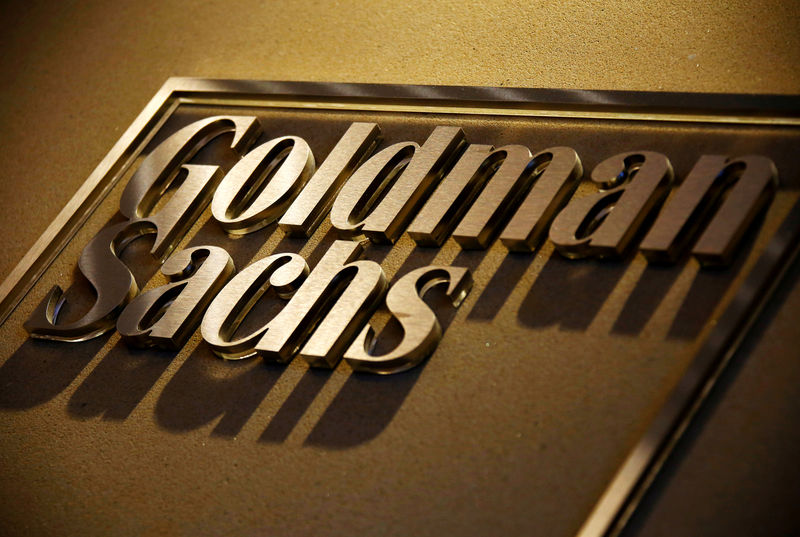By Olivia Oran and Sruthi Shankar
(Reuters) - Goldman Sachs Group Inc (N:GS) fell short of earnings expectations on Tuesday due to a drop in quarterly trading revenue, prompting analysts to demand explanations for underperformance in an area where the bank usually outshines rivals.
Newly appointed finance chief R. Martin Chavez said Goldman's clients traded less with the bank because markets were calmer and because it does not lend as much as competitors. Banks with bigger balance sheets, like JPMorgan Chase & Co (N:JPM), tend to profit not only from financing corporations but from capturing hedging and other markets-related business as well.
"We underperformed this quarter," he said on a conference call with analysts.
Analysts seemed unsatisfied with explanations from Chavez and outgoing CFO Harvey Schwartz. They were unusually tough during a Q&A session, with all but one of six pressing management about trading results, especially in fixed income.
Goldman's 2 percent decline in trading revenue came in sharp contrast to results from JPMorgan Chase & Co (N:JPM), Citigroup Inc (N:C) and Bank of America Corp (N:BAC), which all beat estimates due to strength in trading.
Credit Suisse (SIX:CSGN) analyst Christian Bolu said Goldman investors were showing some "nervousness" about the strength of the business, and UBS's Brennan Hawken chastised the performance, saying that topping the prior year should have been "kind of easy."
"I'm not fully - I'm still confused," said Hawken, adding, "I have some company."
Goldman's shares tumbled 4.8 percent to $215.44.
During the first quarter the CBOE Volatility Index (VIX) reached its lowest level since before financial crisis. Oil prices were also trading at years-low volatility levels.
That lack of volatility meant its investor clients, many of them hedge funds, were trading less. Goldman's unusually large exposure to commodities trading also hurt its fixed income business.
In the best of times, Goldman generated more than $6 billion in quarterly revenue from fixed-income trading. In more recent years, the business has come under pressure from factors including weak market activity and new regulations that restrict what U.S. banks can do and how much capital they must hold against trades.
Goldman's profit rose from a difficult year-ago quarter, with earnings per share of $5.15 versus $2.68. But the results were well short of analyst forecasts of $5.31 per share, on average, according to Thomson Reuters I/B/E/S.
Goldman has historically relied more on trading than other big banks, but has been trying to shift to relatively stable businesses like investment management and lending.
Revenue from investment banking, investment management and investing and lending all rose in the first quarter, but not enough to offset the sharp decline in trading.
Overall, Goldman's profit rose 80 percent to $2.2 billion from $1.2 billion in the first quarter of 2016, when sliding commodity prices, worries about the Chinese economy and uncertainty about U.S. interest rates led to weak results across Wall Street. Its revenue rose 27 percent to $8 billion from $6.3 billion.
The bank's expenses rose just 15 percent and it paid out a smaller share of its revenue to employees. Its closely watched compensation-to-revenue ratio was 41 percent in the first quarter, down from 42 percent a year earlier, but higher than the 38 percent ratio it reported for all of 2016.

Goldman's chief rival Morgan Stanley (N:MS) will report on Wednesday.